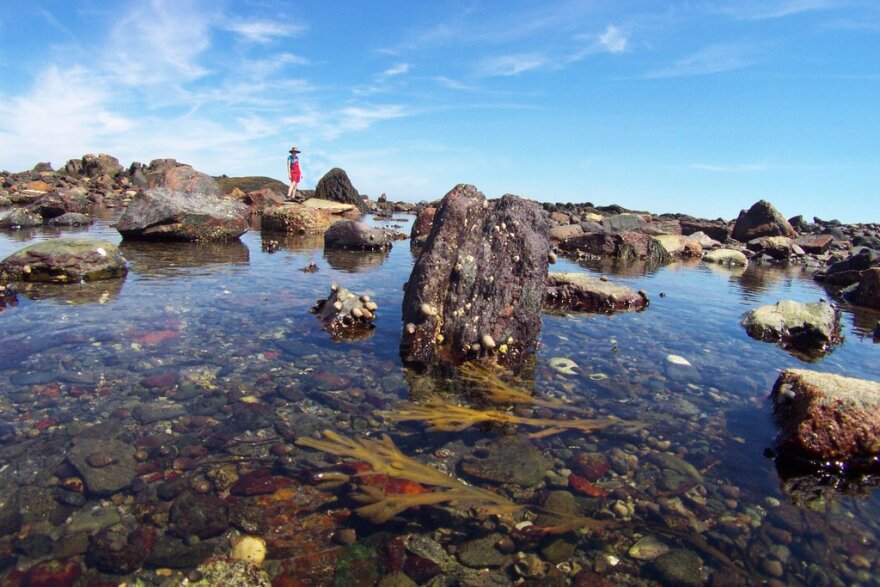Labor Day weekend is often summer’s last hurrah – or at least our last chance to participate in those uniquely summer pastimes. So we thought we’d go out with some sun, surf and a nice breeze by exploring another of New Hampshire’s Wild Neighborhoods. And once again we take a tour of great place to visit, but a hard place to eke out a living.
There are only a few examples of Maritime Rocky Shores within New Hampshire’s borders, and all are along our seacoast or on the Isles of Shoals. And oddly enough some parts of this neighborhood are a lot like the alpine zone we visited a while back: pretty inhospitable, especially the islands. They get hit pretty hard by relentless wind, crashing ocean waves and salt spray.
Our Rocky Shores neighborhood actually contains many distinct marine zones. And, specifically, we want to dig into the Rocky Intertidal Zone, so named because it occupies the area of the shoreline between high tide and low tide.
“Tides are the changing of the earth’s sea-levels due to astronomical factors, specifically the gravitational influence of the sun and the moon.” This familiar definition of tide comes from Jonathan White, marine conservationist and author of the book Tides: The Science and Spirit of the Ocean. But he says we’ve learned a lot more about elements that influence the tides. “There are all other kinds of factors that change the sea level on a daily, hourly, or monthly basis, like meteorological tides: low pressure, high pressure, wind and so forth.”
As White explains it, other factors that affect our tides include planetary movements, meteorological events to harmonics (which is about the resonant frequency of the basin in which the water moves). He says we’re just beginning to understand all these factors. “Over time that really changes what the tide is doing on the coast, how it erodes, how it behaves, where things can live, how large the intertidal zone is. And from a biological point of view whether its optimum for this kind of species or optimum for that kind of species.”
Of course, we’re all familiar with the intertidal zone, it’s where we go with our kids to find all those fascinating tide pools creatures. And this is a difficult place to scratch out a living; twice each day you are alternately pounded by waves or and then exposed to sun and wind. It may not sound so harsh on an August afternoon, but imagine enduring that relentless regimen in November, in February.
But in spite of these forces, some algae are able to scratch out a living; you’ll find cyanobacteria coloring the rocks, and seaweed clinging to them (did you know that all seaweed are algae?). Also clinging to the rocks, you’ll find Barnacles. These amazing little crustaceans secrete an incredibly powerful cement, which anchors them to rocks, pilings, and boats, and allows them to stay anchored in spite of all that wave action. Barnacles actually rely upon that activity. They need the tide to bring them food everyday; when the tide comes in and submerges them in water, they open their shells and these feather-like appendages called cirra emerge and filter microscopic organisms out of the water. And when the tide goes out, barnacles withdraw their cirra, close their shells and wait patiently for the next tide.
Tide pools temporarily trap other crustaceans like hermit crabs and periwinkles. And of course, this zone is habitat for some really cool organisms like starfish and sea urchins. And up the food chain we go to shore birds who nest nearby the intertidal zone, like the arctic tern or the federally threatened piping plover. The birds skedaddle when the cold weather comes, but they rely on all those morsels of protein to raise the chicks and fuel up before the migration.
Enjoy the last of the warm weather, and keep an eye out for flora and fauna wherever you go.









